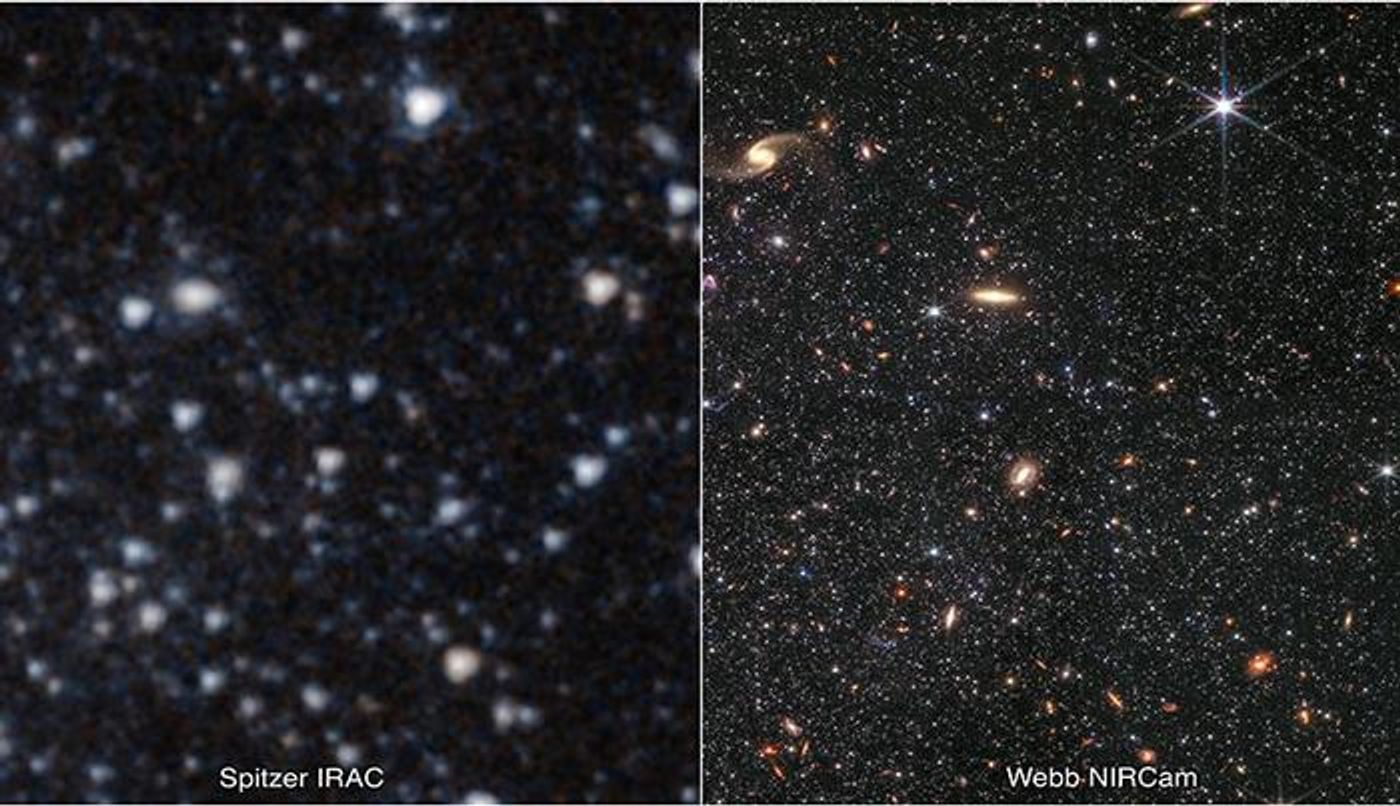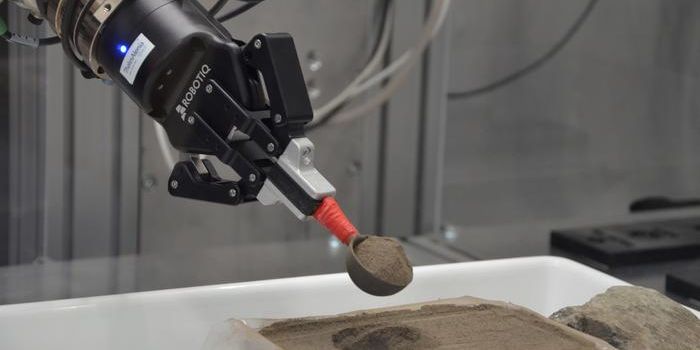Archaeology of the Cosmos: Probing Early Star Formation in the WLM Galaxy
NASA’s James Webb Space Telescope (JWST) continues to dazzle and amaze as it helps astronomers gain greater insights into the universe, and specifically the early universe only a few hundred million years after the Big Bang. Recently, an international team of just over two dozen researchers led by Rutgers University used JWST’s powerful instruments to analyze star formation processes within the Wolf–Lundmark–Melotte (WLM) galaxy, which is a barred irregular galaxy located approximately 3 million light-years from Earth.
Two observations of a piece of the WLM galaxy obtained by NASA's Hubble Space Telescope (left) and the James Webb Space Telescope (right). (Credit: NASA/ESA/CSA/IPAC/Kristen McQuinn-Rutgers University)
“In looking so deeply and seeing so clearly, we’ve been able to, effectively, go back in time,” said Dr. Kristen McQuinn, who is an assistant professor in the Department of Physics and Astronomy at Rutgers University and lead author of the study. “You’re basically going on a kind of archaeological dig, to find the very low mass stars that were formed early in the history of the universe.”
Explained in findings published in The Astrophysical Journal, the researchers trained JWST’s NIRCam instrument on WLM, which despite its relatively close distance to Earth, is home to a star factory that astronomers have long hypothesized contains stars as much as 13 billion years old, just under two billion years after the Big Bang.
In the end, the researchers found that 15 percent of the stars within WLM formed within the first billion years after the Big Bang, followed by a period of decline where only 10 percent of stars formed over the next five billion years, followed by a doubling in stars over the next 2.5 billion years, and finally constant star formation during the most recent five billion years.
“The universe back then was really hot,” said Dr. McQuinn. “We think the temperature of the universe ended up heating the gas in this galaxy, and kind of turned off star formation for a while. The cool down period lasted a few billion years and then star formation proceeded again.”
What new discoveries will astronomers make about the early universe in the coming years and decades? Only time will tell, and this is why we science!
As always, keep doing science & keep looking up!
Sources: NASA, Wikipedia, EurekAlert!, The Astrophysical Journal









